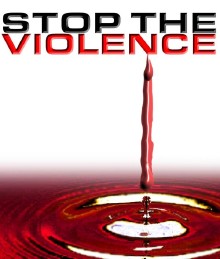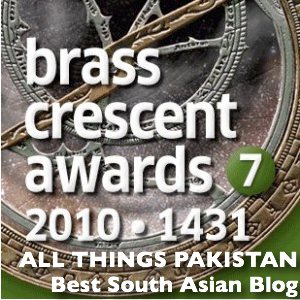Adil Najam
 For nearly a week now Pakistan has watched, in stunned horror, yet another episode of vigilante justice. This one unfolding on our television screens in all its gory detail. The savage murder of two young brothers – Mughees and Muneeb – in Sialkot as people, including police, look on has rightly incensed our sensibilities.
For nearly a week now Pakistan has watched, in stunned horror, yet another episode of vigilante justice. This one unfolding on our television screens in all its gory detail. The savage murder of two young brothers – Mughees and Muneeb – in Sialkot as people, including police, look on has rightly incensed our sensibilities.
The news itself is clearly horrific, horrible, and horrifying. But the newness in the news is that this time people, including the media and official authorities, are moved enough to unleash an outcry. That is new. And that is news.
What happened in Sialkot was ghastly in its detail, inhuman in its execution, and numbing in the reaction of those who stood by to just view (and film) it. But even if the magnitude was off all scale, the action itself – that is, vigilante justice – was not new: More than what happened in Sialkot, what is new is the larger national reaction to what happened at Sialkot.
The media has begun asking some important questions (even though parts of the media still seems mostly interested in the voyeuristic elements of violence in action). Government officials, starting with the Sialkot Administrator but later also the police chief and the provincial and national authorities, including the Supreme Court, have moved not just to condemn but to take action. More action and better implementation is required, but public outcry has clearly worked in this case to move the authorities into action.
All of this is exactly how functioning polities should deal with incidents of extremism and vigilantelism. But mostly importantly, all of this is news precisely because this is not how things like this have often been dealt with in the past. The opportunity in this truly horrible event is to turn this into a moment of true introspection about ourselves and the attitudes about violence of the many in society, rather than another voyeuristic titillation about the brutality of the few.
Supreme court or not, the jury is still out on whether we will be able to do so or not.
By now everyone knows the details and many have seen the gut-wrenching video of the savagery unfolding in front of their eyes. The video ghastly indeed; not just because of what is being done to the two young brothers but also what is not being done by all the people watching it. Like tamashbeen they watch the orgy of violence in front of them seemingly not moved; indeed sometimes they seem to be cheering on; flashes, cameras, mobile phones keep flashing on the screen as if these were spectators at a sporting event; and these are ordinary people: including the police, traders going about their regular business, ordinary citizens, and even children. The video sends a cold shiver up ones spine. As it should.
We will not put ourselves or you through the goriness of this spectacle again. But let us, instead, remember anotehr very similar brutality when we – and by ‘we’, I do not mean the government or authorities, I mean ‘we’: as in me and you – were not similarly incensed, even though we should have been. Indeed, when too many of ‘us’ seemed to be cheering on those taking the law into their own hands:
- Please revisit the May 2008 post at ATP titled “Vigilante Justice: Horrible, Horrifying, Horrendous.”
- The post is from Karachi: two guys commit a robbery, people from the neighborhood runs after them, catches them, and then sets them on fire (alert: the post has some horrible pictures of the robbers on fire; reader discretion advised).
- More importantly than the post, please read the comments. See how many readers even of this blog actually think what happened there was ‘OK’ and maybe even a good thing.
The point here is an unpopular one to make. But is an important one. You cannot create a society where you encourage and accept some forms of violence, and then act all surprised and outraged when that same violence gets out of hand. The Violence we condone will breed the violence we condemn.
Let me be clear. I have no sympathy for over-dramatic analyses which suggest that the murderers of Sialkot represent the entirety of Pakistan’s 175 million people. They do not. They are the exception and they are the extreme. Exceptions and extremes exist in every society.
But the people who are watching on as the murders happen cannot be exceptions and extremes. They are, indeed, the faces of everyday Pakistan. And that, I think, is what is sending the cold shiver down our spine. The validation of violence that we see in their faces, is a validation of violence we have seen too many times ourselves. No society must ever be judged by the extreme and the fanatic amongst it. But every society should be held responsible for how it deals with and reacts to those extreme and fanatic acts. It is entirely right, therefore, to be asking some very tough questions of ourselves and our own relationship to the violence around us.
It is indeed solace that there is outrage and widespread outrage. Maybe because it was on video the reaction was wall-to-wall and swift. Maybe, and one hopes this is true, people have also begun to speak up more against obvious injustices – as we saw, for example, in the recent Prem Chand case. But it is also true, and maybe even more true, that the voyeuristic element still dominates the discourse. Most true of all is the fact that those who were at the scene seemed not much outraged at all. The outrage of the rest of us, rightly placed as it may be, comes way too late to be of much use to Mughees and Muneeb.
On this blog we have had to write too often about how society is slipping into an increasing acceptance, even justification, of violence. Syed Abbas Raza recently wrote about the shrinking civility in society and we actually declared 2007 as a year of ‘angst and anger.’ Indeed, we struggle with the tantrums of anger in our comment pages every day. Too many people seem too angry, at too many things, too much of the time. Angry enough to attack each other’s integrity. It is not enough to say that we disagree with someone, it seems necessary to inflict pain on those we disagree with – if not physical violence, then the emotional violence of words purposefully constructed to hurt. That, of course, is a small matter. But at the base of this small matter is a big big problem. The problem of anger in society. And anger when mixed with a validation of violence and a disregard, disrespect and distrust of all institutions of state, becomes a really deadly cocktail.
Maybe as we angrily express outrage over what happened in Sialkot – as we rightly should – we should also take a moment to think about how we – and, again, by ‘we’, I do not mean the government or authorities, I mean ‘we’: as in me and you – have become such a violence prone society: violence in the name of religious difference, violence in the name of politics, violence in the name of ideology, and violence even in the name of justice!




















































Very good post, Sir.
How many times have I read a post here condemning some sort of violence – against Ahmedis or against Christians or against women or again wifes by husbands and so on. And each time some idiots come and start defending it in name of culture or religion or whatever.
And then we make heroes out of Lal Masjid types and others have said.
This was the result of all this type of attitudes.
@Kamran
DO you even read what you are writing!!!!!
So, the way you want to deal with brutality is by being even more brutal!!!!
I guess you are no better than those murderers who did this!
I waited 3 days for Adil to put up this post on this ghastly incident.
Firstly I totally agree with Zubair that general public is hands in hands in promoting this type of barbaric, violent culture.They clapped when people set on fire two dacoits in Karachi recently.Punjab police seems to have recently grown fond of doing this to seek admiration from the higher ups.
BUT,how did we arrive into this?This is all happening when the common man has lost all hopes in securing justice.Dacoits being arrested and later set free after police were bribed is nothing new in Pakistan.
I was in Pakistan recently and our car got stolen.The SHO told us,we will get our car after 3 days,which we did but not until everything inside was taken out.Police is shamelessly involved in car-lifting,burglaries and dacoities.
That police is involved in heinous crimes is also not new in Pakistan.But to actually order and supervise ghastly,horrible torture on the streets is a new,dangerous phenomena as it has unfolded in Sialkot last week.
The latest on the story is that the whole Sialkot police force is doing its best to save its skin and is going out of the way to mess up and confuse the whole investigation by spilling different versions of the incident.
Atleast 3 different versions of the incident have so far been floated.
Just a night before, the elder brother,Hafiz Mughees had conducted the taraweeh in the neighbourhood masjid as he was a hafiz himself.
@Baig and @Faizain
Stop blaming police and government, we have proved that us Awaam are far more worst than them.
“What could they do?”
1- They could have stopped the people who were beating the young innocent boys with hands,
2- Or may be they could have stopped them by telling them that what they’re doing is wrong,
3- Or perhaps they could have abstained themselves from enjoying and making vidz with their mobile and handy cams
4- Or least they could have done is watching silently rather than advising those butchers on how and where to beat. I can clearly hear in video a guy saying “moun per maro” (hit him in the face).
What people at Sialkot did have put whole humanity into a shame.
@Zubair.
Good point about the Lal Masjid.
What those women were doing their with the kidnappings and spreading fears and going around with Laathis was also taking law into their own hands. And yet people think they were heroes. I guess anyone who thinks the Lal Masjid women were heroes would also be singing praises of the these brutal killers, since they both did the same thing – took the law into their own hands for ‘speedy justice.’